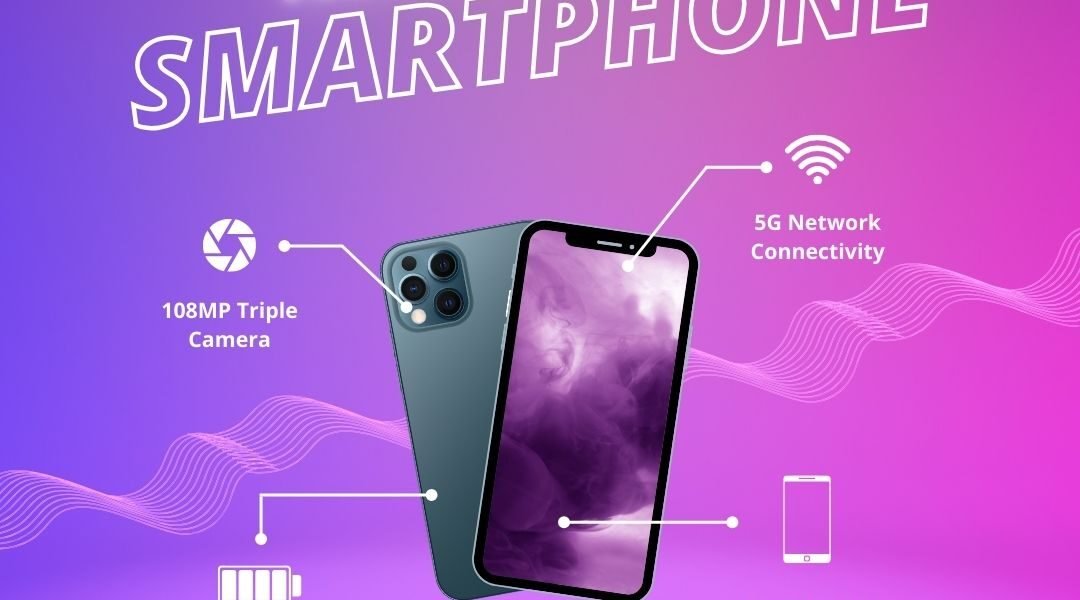Smartphones have become a constant companion, serving as everything from cameras and gaming devices to virtual assistants and health trackers. As we move further into 2024, smartphone technology is reaching unprecedented levels, with breakthrough features that redefine what these pocket-sized marvels can do. With each new release, companies are pushing the boundaries of performance, creativity, and connectivity to meet user demands and inspire the tech trends of tomorrow. Breakthrough Features in the Latest Phones

In this blog, we’ll explore the latest and most exciting features in next-gen smartphones. From AI-powered capabilities and immersive displays to groundbreaking battery technology, these innovations are reshaping the mobile landscape and setting a high standard for future advancements.
1. AI-Powered Cameras: More Than Just a Lens
In the realm of smartphone photography, AI is revolutionizing the way we capture and enhance images. Camera systems in the latest phones use artificial intelligence to automatically adjust settings, detect scenes, and even suggest the best angles. These features mean that users can take professional-quality photos without the need for complicated editing software or photography expertise.Breakthrough Features in the Latest Phones
a. Enhanced Low-Light Photography:
AI-enabled night modes have become more sophisticated, enabling sharper and clearer images in low light. These systems now adjust lighting, reduce noise, and enhance color, transforming what used to be a grainy, unusable photo into a vibrant, high-resolution image.Breakthrough Features in the Latest Phones
b. Real-Time Object Recognition and Scene Detection:
The latest smartphones are using real-time object recognition to analyze scenes and adjust settings accordingly. For instance, when taking a portrait, the camera focuses on faces while blurring backgrounds, or it automatically shifts to macro mode for close-up shots. This level of intelligence allows users to capture the best possible version of any moment.
2. Foldable and Flexible Screens: A New Era of Display Technology
Flexible and foldable screens have started to gain traction in recent years, and the technology is only getting better. As more brands enter the foldable phone market, innovations in materials and durability are making these devices more practical and affordable.Breakthrough Features in the Latest Phones
a. Enhanced Durability and Smooth Folding Mechanisms:
Early foldable phones faced issues with screen creasing and durability, but today’s models have resolved these problems. The latest foldable devices use advanced hinge mechanisms, durable flexible glass, and anti-scratch coatings that extend the lifespan of these displays. These improvements make foldable phones a feasible option for a wider audience.
b. Multitasking and Productivity:
Foldable phones offer users the unique advantage of a tablet-sized screen that fits in their pocket, making it easier to multitask. With a larger screen, users can comfortably edit documents, watch videos, and manage emails simultaneously. This productivity boost makes foldable screens a game-changer for business professionals and tech enthusiasts alike.
3. 5G and 6G Readiness: A Leap in Connectivity
While 5G has become the new standard for mobile internet, some of the latest phones are already preparing for the next step in connectivity: 6G. The upcoming generation of smartphones is being designed to support even faster speeds, with a focus on latency reduction and enhanced connection stability.
a. Enhanced Network Speeds and Low Latency:
With 5G already enabling faster downloads and seamless streaming, 6G will elevate connectivity further, supporting emerging technologies like AR/VR experiences and complex data-driven apps. Phones with 6G capabilities will allow users to download entire movies in seconds, enjoy lag-free gaming, and interact in real-time across continents with minimal delay.
b. Expanded IoT Capabilities:
As 6G technology begins to develop, smartphone connectivity will also impact the Internet of Things (IoT) more significantly. Next-gen phones will be the control hubs for smart homes, smart cars, and smart cities, helping users seamlessly manage their interconnected lives from one device.
4. Augmented Reality (AR) Integration: Bridging Digital and Physical Worlds
Augmented reality is becoming more than just a fun feature in mobile games. The latest smartphones are equipped with powerful AR capabilities, making it easier to overlay digital information onto the physical world. This can transform everything from shopping experiences to educational apps.
a. Enhanced AR Hardware and Software:
New processors and sensor technology allow for more precise and realistic AR experiences. The latest phones are equipped with LiDAR (Light Detection and Ranging) sensors and advanced cameras, which allow for better object mapping and realistic 3D renderings. This results in smoother and more engaging AR interactions.
b. AR Shopping and Visualization:
Retailers are integrating AR into their apps, allowing users to see how furniture looks in their living room or how clothes might fit them. This personalized shopping experience makes buying decisions easier and brings a new dimension to e-commerce. Users can interact with virtual items in real-time, which has a direct impact on customer satisfaction and buying confidence.
5. Biometric Security: Advanced Face and Fingerprint Recognition
With security concerns on the rise, smartphone companies are making it a priority to improve biometric authentication features. From under-display fingerprint scanners to advanced facial recognition, next-gen phones are setting new security standards to ensure user privacy.
a. Under-Display Fingerprint Sensors:
Under-display fingerprint sensors are becoming faster and more accurate, making it easier to unlock phones with a simple touch on the screen. This technology provides seamless security without sacrificing screen space or usability, making it one of the most sought-after features in modern smartphones.
b. 3D Facial Recognition:
While facial recognition has been a standard feature in many smartphones, the latest models are taking it a step further with 3D mapping. Advanced facial recognition systems create a 3D model of the user’s face, making it nearly impossible to bypass with photos or videos. This enhances security and makes facial recognition a reliable alternative to traditional PIN codes or passwords.
6. Battery Life and Fast-Charging Breakthroughs
Battery technology has always been a focus for smartphone manufacturers, but 2024’s advancements bring significant improvements in both battery life and charging speed.
a. Longer-Lasting Batteries:
The latest phones feature more energy-efficient chips and optimized battery management systems that can extend battery life without compromising on performance. Some phones are equipped with smart battery technology that learns user behavior, only using energy when necessary.
b. Ultra-Fast Charging:
While fast charging has been around for a few years, the latest models are pushing the boundaries with ultra-fast charging that can fully charge a phone in under 20 minutes. This technology is invaluable for users who rely on their devices heavily throughout the day, making it easy to get a quick power boost in a matter of minutes.
7. Satellite Connectivity: A New Frontier in Mobile Communication
One of the most groundbreaking features in the latest phones is satellite connectivity. This technology allows smartphones to connect with satellites for emergency communication, even when no cellular network is available.
a. Emergency SOS via Satellite:
For users in remote or disaster-prone areas, satellite connectivity provides a lifeline in emergencies. When cellular networks are down, phones equipped with satellite connectivity can send SOS messages to rescue services, potentially saving lives.
b. Expanding Global Coverage:
Satellite technology also has the potential to bring mobile connectivity to underserved areas, where traditional cellular towers are not feasible. As this technology develops, it could make mobile access truly global, bridging the digital divide and opening new opportunities. For education, commerce, and communication.
Conclusion:
The next-gen features in the latest phones are set to redefine. How we interact with our devices and the world around us. With breakthroughs in AI-powered cameras. Foldable screens, 6G readiness, augmented reality, and satellite connectivity. 2024 is shaping up to be a landmark year for smartphone technology. These innovations not only enhance user experience but also lay. The groundwork for a future where smartphones are more integrated into our daily lives than ever before.
As you consider upgrading to a new smartphone, keep these features in mind. They represent more than just technological improvements—they’re the next steps toward a more connected, efficient, and intelligent mobile experience.




